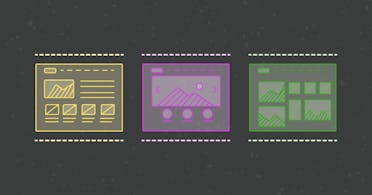Understanding the difference between static, dynamic, and hybrid websites

Website performance isn't just about speed — it's about delivering the right content at the right time, while managing resources efficiently. High-traffic sites and new startups alike are increasingly adopting sophisticated approaches to content delivery that combine the best of both worlds: lightning-fast pre-built pages and dynamic, real-time updates. But what does this mean for your business, and how can you make sense of these different approaches?
Think of your website like a newspaper trying to serve hundreds of readers simultaneously. You could write every article from scratch (slow but customizable), pre-write everything (fast but less flexible), or find a smart balance between the two. Today's most successful websites are mastering this balance, and understanding the difference between static, dynamic, and hybrid approaches is key to making the right choice for your digital presence.
Let’s break this down into simple, practical terms that will help you understand why these architectural choices matter for your bottom line.
Static or pre-built websites Direct link to this section
You can think of these like a magazine or catalog. Before distribution, everything is printed, bound, and ready to go. When someone wants to read it, they just pick it up — there's no waiting for pages to be printed on demand.
In web terms, all the pages are built in advance and just sit ready to be served to visitors. When someone visits your website, they're essentially getting pre-made pages from a digital warehouse (CDN), which makes delivery incredibly fast.
Dynamic websites Direct link to this section
These sites act more like an on-demand newspaper, where every article is written to order. When a new reader arrives, the journalist (server) has to write everything from scratch, even if it’s the same article that a different reader requested a second before. While this allows for customization, it takes longer and requires more resources to serve each reader.
In web terms, the server is building each page from scratch when a visitor requests it, which takes more time and computing power.
The hybrid approach Direct link to this section
The hybrid approach is like a newsroom that pre-prepares some articles, but still writes certain sections to order. A major report might be pre-written, while to-the-minute statistics are delivered as they arrive. This gives you the best of both worlds — quick updates where possible, but customization where needed.
In web terms, this means pre-building pages that don't change often (like your About page or blog posts) while dynamically generating pages that need real-time data (like user accounts or breaking news).
A real-world example Direct link to this section
Let’s imagine a major media company's website, which might have a variety of approaches for different content:
Static (pre-built) Direct link to this section
While we think of media sites as being constantly updated, the reality is that most content can be entirely prebuilt:
- Published articles and their images
- Editorial content like "About Us" and "Contact" pages
- Historical content like past coverage or special features
- Reporter profiles and bios
- Topic landing pages (like "Technology" or "Politics" sections)
These are all built in advance and ready to go, just like a newspaper being printed the evening prior to its delivery.
Dynamic (built on request) Direct link to this section
Strictly speaking, there are only a few sections that would absolutely need to be dynamic, in that they are tailored to each visitor or moment. Live weather updates or raw election results, for example, could be delivered instantly from external live data sources. Similarly, personalized recommendations would be a dynamic feature.
Hybrid Direct link to this section
The homepage is a perfect candidate for a hybrid approach: its layout and most content is pre-built for speed, but breaking news headlines and "trending now" sections can update dynamically.
Article pages could also benefit from a hybrid approach, where the main content is pre-built but view counts, related stories, and ad spaces update dynamically.
This hybrid approach might be the best of both worlds for a news website, because:
- Regular articles load instantly because they're pre-built
- Breaking news can still be pushed out immediately through the dynamic parts of the site
- Readers get access to live data and personalization where it matters
- The site stays fast and reliable even during major news events when traffic spikes
The same principles could apply to many other types of sites — entertainment venues (static: event calendar structure; dynamic: ticket availability), educational institutions (static: course catalogs; dynamic: student portals), or even government services (static: information pages; dynamic: application forms).
The key is identifying which content can be pre-built because it doesn't change often, and which truly needs to be generated on the fly. This balance helps deliver both speed and freshness to your audience.
Let's take a look at your site
Need some help working out which parts of your site can be static, and when to use a hybrid approach?




